Hyundai IONIQ 5 vs Polestar 2 - Diferencias y precios comparados
Costes y consumo
Al comparar precio y eficiencia suelen verse las mayores diferencias. Así se descubre cuál encaja mejor en el presupuesto a largo plazo.
Hyundai IONIQ 5 tiene una ventaja ligero en precio: parte desde 45700 €, mientras que el Polestar 2 cuesta 49800 €. La diferencia es de unos 4159 €.
En consumo eléctrico, la ventaja es para el Polestar 2: con 14.80 kWh cada 100 km, es ligero más eficiente que el Hyundai IONIQ 5, que necesita 15.60 kWh. La diferencia ronda los 0.80 kWh.
En autonomía, el Polestar 2 ofrece un rendimiento un poco mejor: alcanza hasta 659 km, unos 89 km más que el Hyundai IONIQ 5.
Motor y rendimiento
Potencia, par motor y aceleración son las cifras clásicas para los amantes del motor – y aquí aparecen diferencias notables.
En cuanto a potencia, el Hyundai IONIQ 5 tiene una ventaja distinto: 650 HP frente a 476 HP. Eso supone un aumento de unos 174 HP CV.
En aceleración de 0 a 100 km/h, el Hyundai IONIQ 5 es claramente perceptible más rápido: completa el sprint en 3.50 s, frente a 4.20 s del Polestar 2. Es aproximadamente 0.70 s más veloz.
En velocidad máxima, el Hyundai IONIQ 5 es notable superior – alcanza 260 km/h, mientras que el Polestar 2 se queda en 205 km/h. La diferencia es de unos 55 km/h.
También hay diferencias en el par motor: el Hyundai IONIQ 5 empuja ligero con 770 Nm frente a 740 Nm. La diferencia ronda los 30 Nm.
Espacio y practicidad
Habitabilidad, maletero y carga útil determinan la funcionalidad en el día a día. Aquí cuentan la comodidad y la flexibilidad.
Plazas: el ofrece más asientos – frente a .
En peso en vacío, el Hyundai IONIQ 5 es ligero más ligero – 1955 kg frente a 2015 kg. La diferencia ronda los 60 kg.
En capacidad de maletero, el Hyundai IONIQ 5 ofrece evidente más espacio – 520 L frente a 405 L. La diferencia es de unos 115 L.
En capacidad máxima de carga, el Hyundai IONIQ 5 es evidente mejor – hasta 1580 L, unos 485 L más que el Polestar 2.
En capacidad de carga útil, el Hyundai IONIQ 5 evidente se impone – 530 kg frente a 421 kg. La diferencia es de unos 109 kg.
¿Quién es el ganador del duelo?
En general, el Hyundai IONIQ 5 se muestra es claramente superior y se lleva el título de DriveDuel Champion.
Destaca por su equilibrio general y por ser el compañero más versátil en el día a día.
 @ Hyundai Motor Company
@ Hyundai Motor Company
Hyundai IONIQ 5
Costos y consumo
Ver análisis detallado
Motor y rendimiento
Ver análisis detallado
Dimensiones y carrocería
Ver análisis detallado
Hyundai IONIQ 5
El Hyundai IONIQ 5 sorprende por su diseño retrofuturista y su interior espacioso, más parecido a una sala de estar sobre ruedas que a un coche convencional. Ofrece una conducción suave y práctica para el día a día, ideal para quien busca ecología sin renunciar al estilo y a una buena dosis de carácter tecnológico.
detalles @ Hyundai Motor Company
@ Hyundai Motor Company
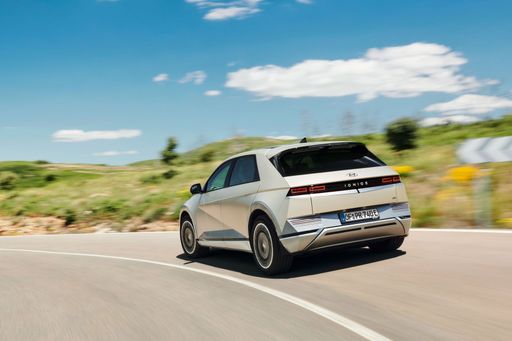 @ Hyundai Motor Company
@ Hyundai Motor Company
 @ Hyundai Motor Company
@ Hyundai Motor Company
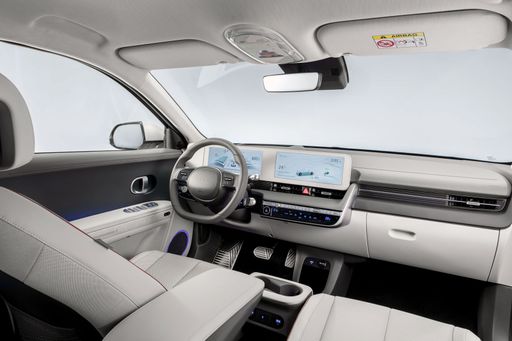 @ Hyundai Motor Company
@ Hyundai Motor Company
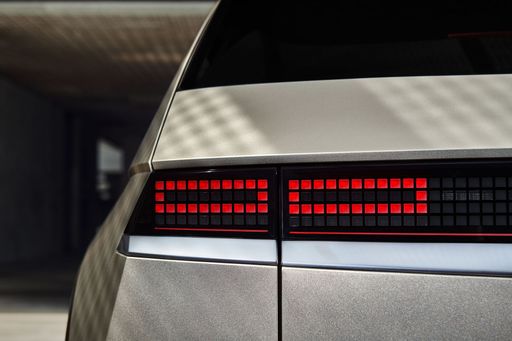 @ Hyundai Motor Company
@ Hyundai Motor Company
Polestar 2
El Polestar 2 ofrece una estética escandinava sobria y una puesta a punto que premia la precisión al volante, haciendo que cada trayecto se sienta refinado y deliberado. Para quien busca tecnología útil y presencia sin estridencias, es una opción con carácter y sentido práctico que no necesita alardes para destacar.
detalles @ Polestar Automotive Holding
@ Polestar Automotive Holding
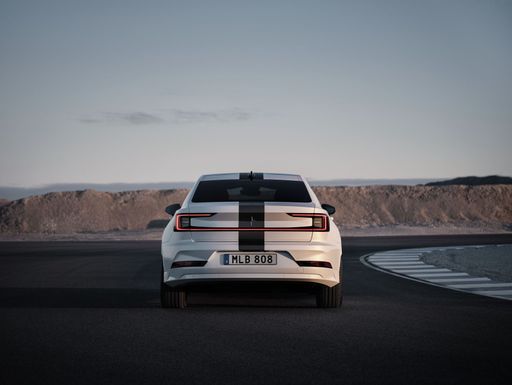 @ Polestar Automotive Holding
@ Polestar Automotive Holding
 @ Polestar Automotive Holding
@ Polestar Automotive Holding
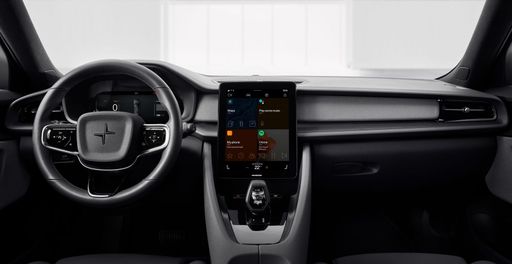 @ Polestar Automotive Holding
@ Polestar Automotive Holding
 @ Hyundai Motor Company
@ Hyundai Motor Company
|
 @ Polestar Automotive Holding
@ Polestar Automotive Holding
|
|
|
|
Costos y consumo |
|
|---|---|
|
Precio
45700 - 76200 €
|
Precio
49800 - 68100 €
|
|
Consumo L/100km
-
|
Consumo L/100km
-
|
|
Consumo kWh/100km
15.6 - 21.2 kWh
|
Consumo kWh/100km
14.8 - 16.8 kWh
|
|
Autonomía eléctrica
440 - 570 km
|
Autonomía eléctrica
554 - 659 km
|
|
Capacidad de la batería
63 - 84 kWh
|
Capacidad de la batería
78 kWh
|
|
co2
0 g/km
|
co2
0 g/km
|
|
Capacidad del tanque
-
|
Capacidad del tanque
-
|
Dimensiones y carrocería |
|
|---|---|
|
Tipo de carrocería
SUV
|
Tipo de carrocería
Sedán
|
|
Asientos
5
|
Asientos
5
|
|
Puertas
5
|
Puertas
5
|
|
Peso en vacío
1955 - 2275 kg
|
Peso en vacío
2015 - 2188 kg
|
|
Capacidad del maletero
480 - 520 L
|
Capacidad del maletero
405 L
|
|
Longitud
4655 - 4715 mm
|
Longitud
4606 mm
|
|
Anchura
1890 - 1940 mm
|
Anchura
1859 mm
|
|
Altura
1585 - 1605 mm
|
Altura
1473 - 1479 mm
|
|
Capacidad máxima del maletero
1540 - 1580 L
|
Capacidad máxima del maletero
1095 L
|
|
Capacidad de carga
385 - 530 kg
|
Capacidad de carga
375 - 421 kg
|
Motor y rendimiento |
|
|---|---|
|
Tipo de motor
Eléctrico
|
Tipo de motor
Eléctrico
|
|
Transmisión
Automática
|
Transmisión
Automática
|
|
Detalle de transmisión
Caja de reducción
|
Detalle de transmisión
Caja de reducción
|
|
Tipo de tracción
Tracción trasera, Tracción total
|
Tipo de tracción
Tracción total, Tracción trasera
|
|
Potencia HP
170 - 650 HP
|
Potencia HP
272 - 476 HP
|
|
Aceleración 0-100km/h
3.5 - 8.5 s
|
Aceleración 0-100km/h
4.2 - 6.4 s
|
|
Velocidad máxima
185 - 260 km/h
|
Velocidad máxima
205 km/h
|
|
Par motor
350 - 770 Nm
|
Par motor
490 - 740 Nm
|
|
Número de cilindros
-
|
Número de cilindros
-
|
|
Potencia kW
125 - 478 kW
|
Potencia kW
200 - 350 kW
|
|
Cilindrada
-
|
Cilindrada
-
|
General |
|
|---|---|
|
Año del modelo
2024 - 2025
|
Año del modelo
2024
|
|
Clase de eficiencia de CO2
A
|
Clase de eficiencia de CO2
A
|
|
Marca
Hyundai
|
Marca
Polestar
|
¿Qué tipos de tracción están disponibles para el Hyundai IONIQ 5?
El Hyundai IONIQ 5 está disponible con tracción Tracción trasera o Tracción total.
Los precios y datos mostrados son estimaciones basadas en los precios de lista en Alemania y pueden variar según el país. Esta información no es legalmente vinculante.
